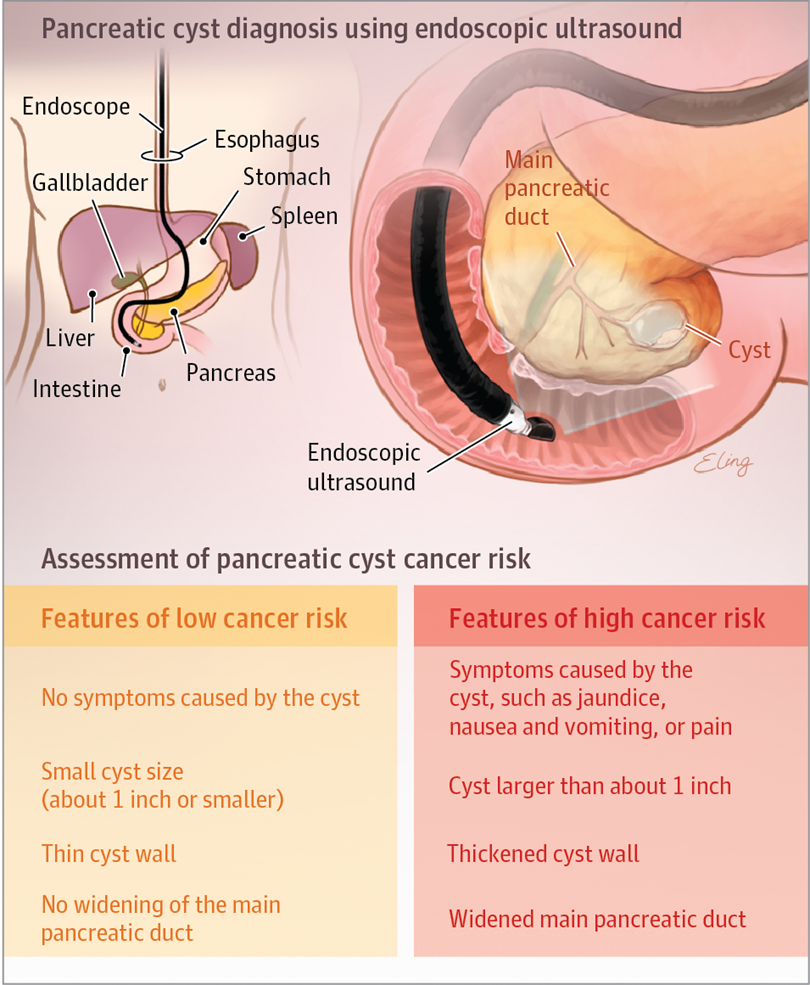Pancreatic Cystic Neoplasms

Diagnosis and Treatment of Pancreatic Cystic Neoplasms
Pancreatic cystic neoplasms are fluid-filled sacs (cysts) within the pancreas.
Pancreatic cysts are usually found when patients undergo abdominal imaging for other reasons.
Diagnosing Pancreatic Cysts
Doctors use computed tomography (CT) or magnetic resonance imaging (MRI) scans to diagnose pancreatic cysts and determine their type. These tests can also identify features of the cysts that suggest an increased risk of cancer.
If imaging scans cannot identify the type of cyst or if the cyst has a concerning appearance, doctors may also use an endoscopic ultrasound procedure. This involves passing a tube called an endoscope through the patient”s mouth and past the stomach. The endoscope allows doctors to see the lining of the intestine as well as the cyst and surrounding pancreas. These images can identify features of the cyst”s wall. Doctors can also use the endoscope to guide a needle into the cyst to collect cells and fluid. The cells are then tested to determine if the cyst is cancerous. The fluid is tested for various substances, including pancreatic enzyme (amylase), a mucous material called mucin, and substances that might indicate cancer, such as carcinoembryonic antigen. Each of these substances helps characterize the type of cyst.
Treating Pancreatic Cysts
Cysts are divided into categories based on their potential to be cancerous. Cysts that have mucin are considered precancerous. The most common precancerous type is intraductal papillary mucinous neoplasm. This type can be further classified into low, moderate, or high risk based on various features. Low-risk cysts are usually small, stable in size, and without any worrisome features. They do not need specific treatment and can usually be checked from time to time using CT or MRI. Moderate-risk cysts may need endoscopic ultrasound monitoring, more frequent imaging scans, or both. High-risk cysts have suspicious features that might indicate cancer. These features include presence of a solid cyst wall or of fluid that is concerning. The patient may also have yellowing of the skin (jaundice) or pain. For high-risk cysts, removal of the cyst and part of the pancreas is most often recommended.
Patient Outcomes
Operations to remove cysts often have complications and require a long time for recovery. Most patients have an excellent long-term prognosis. Even when the cysts have high-risk features requiring removal, invasive cancers are usually not found. When there is cancer, the outcome is usually better than for more typical pancreatic cancer. Whether surgery is required or not, the pancreas should be checked for the life of the patient unless the cyst is not cancer. Even when the cyst is removed, it is necessary to monitor the part of the pancreas that remains. This is because new cysts and sometimes cancer can develop in the remaining pancreatic tissue.


